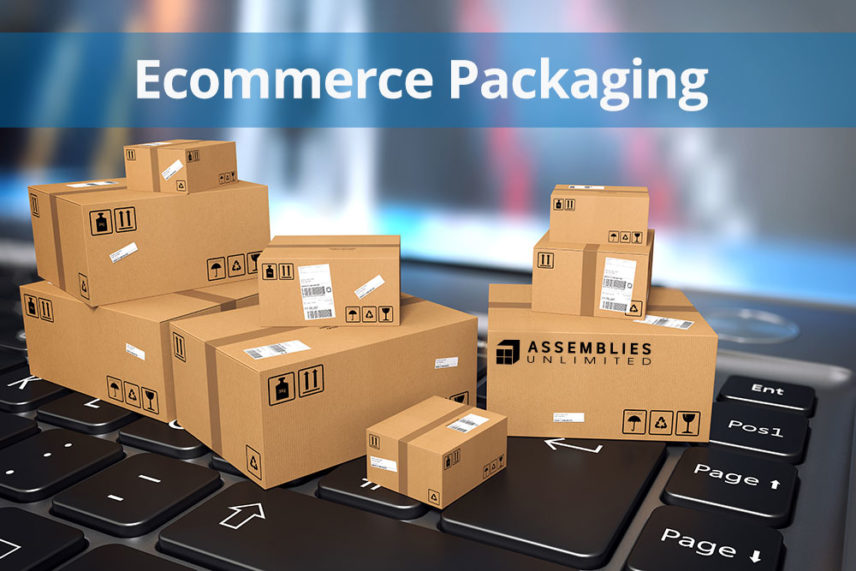
Business operations continually evolve, replacing once best practices with advances and innovation that become the new standard. With each shift, producers and other players in the consumer supply chain scramble to fine-tune their approaches before the next wave of change shakes things up again.
As manufacturers and their packaging partners navigate the cutting-edge of marketing and product presentation, the playing field will be forever subject to transformation.
In some cases, standards change overnight, revamping entire industries in the blink of an eye. Other shifts take longer to unfold, prolonging the transition from tried and true practices to uncharted territory.
In today’s hyper-connected, brand-sensitive environment, one aspect of sales and marketing lags noticeably when compared to other forward-thinking design advances. Ecommerce sales need better packaging.
Advancing E-commerce in Packaging Warrants Attention
Consumerism made its way to the internet almost immediately upon its inception, spawning Web-based retailing in every category. Each year, online sales grow to account for a larger piece of the overall retail pie, changing the way sellers bring products to shoppers.
And as each producer and vendor strives to find a niche online, broad-line suppliers have brought inconceivable numbers of products together under a single marketing umbrella.
Companies like Amazon and Overstock, for instance, make it easier than ever for armchair shoppers to point and click their way to a vast array of retail purchases.
As quickly as it became cemented in consumers’ bags of tricks, online shopping came out of the gate with a clear objective. Volume and price, rather than service and distinction, immediately dominated the highly competitive online marketplace.
As a result, packaging choices were made based on cost rather than reflecting other important considerations, like design, branding, and merchandising value. Times have changed, however, so e-commerce packaging needs to evolve alongside web-based sales capabilities.
Service and usability are key to the future of e-commerce. Consumers are no longer willing to tolerate bad service for the sake of having goods delivered to their front doors. The market is too competitive and no longer operates on volume-based principles, so retailers of all sizes strive to find individuality online. And since packages make bold statements, the days of plain cardboard boxes and lackluster e-commerce packaging are over.
What Shapes Consumer Shifts?
Staying ahead of consumer trends is an industry of its own, prompting analysts to scrutinize every aspect of shoppers’ behavior. For contract packagers, responding to trending consumer preferences are crucial, enabling producers to ride the wave of interested buyers. To keep up with changing times, experienced packaging providers lean on technology, materials advances, and established relationships within the industry.
Large marketplace sellers like Amazon set the early pace online, fulfilling orders with nondescript boxes and packaging. Today, custom runs are more affordable than in the past, so companies of all sizes can take advantage of e-commerce package customization. Given the importance of branding and product recognition, high levels of personalization furnish game-changing results for producers partnered with the proper packaging company.
Today’s shopper is always tuned in via social media and other connections, so establishing relationships with buyers is a continuous process. With over one trillion dollars spent online last year, creating a seamless customer experience is more important than ever before.
Image, branding, and other consumer impressions are made in seconds and reinforced by every aspect of a company’s comprehensive marketing and merchandising approach – including packaging.
Packaging plays a central role in brick-and-mortar point-of-sale merchandising, and the trend will continue to make distinctive packaging an important part of any online vendor’s success.
Mobile content, for example, is exploding, so the brand flow created by packaging that reflects features and values shared across mobile channels reinforces customer relationships and product identity – all the way down to the “virtual” point of sale.
Standing Out in Packaging
Boxes and shipping cases are becoming more important to online retailers, especially those without storefronts. For strictly Web-based vendors, packages provide points of contact with customers, creating a physical connection retailers want to take advantage of.
In addition to a pleasant experience, producers want the packaging to provide a memorable interaction that stimulates brand loyalty. Sound like a tall order?
When the alternative is plain corrugated boxes, retailers committed to standing out have plenty of upward momentum carrying-out creative e-commerce packaging projects.
Plain brown boxes and clear poly bags don’t add value to the products they contain.
On the other hand, packages with instructional information, artwork, images, and logos tell stories – the value of which cannot be underestimated in competitive e-commerce industries.
Several strategies maximize the impact of packaging and support ongoing recognition and sales.
- Graphics and Proprietary Artwork – Image is everything to online sellers because face-to-face contact is absent. To help bridge understanding between buyers and sellers, contract packagers find ways to incorporate recognizable features into various forms of packaging.
- Technology – Interactive technology is now commonly found on the packaging. Scannable features enable shoppers to expand their understanding of products using their smartphones – before making a purchase.
- Organic and Green Trends – For producers committed to sustainable practices and green solutions, responsible packaging choices reflect shared values with customers.
- Functional Packaging – Usability is important to consumers. Multi-function packages and containers that can be reused are finding their way to online channels.
In Conclusion
The juggernaut of e-commerce sales rolls onward. And with it, packaging technology for online sales continues to respond to the changing role of Web-based consumerism.
In order to stay connected with modern shoppers and build brand loyalty of any measure, e-commerce packaging must reinforce image and identity and support a comprehensive marketing effort. Fulfilling orders with pedestrian packaging is like leaving money on the table for sellers serving today’s savvy Web shoppers.
